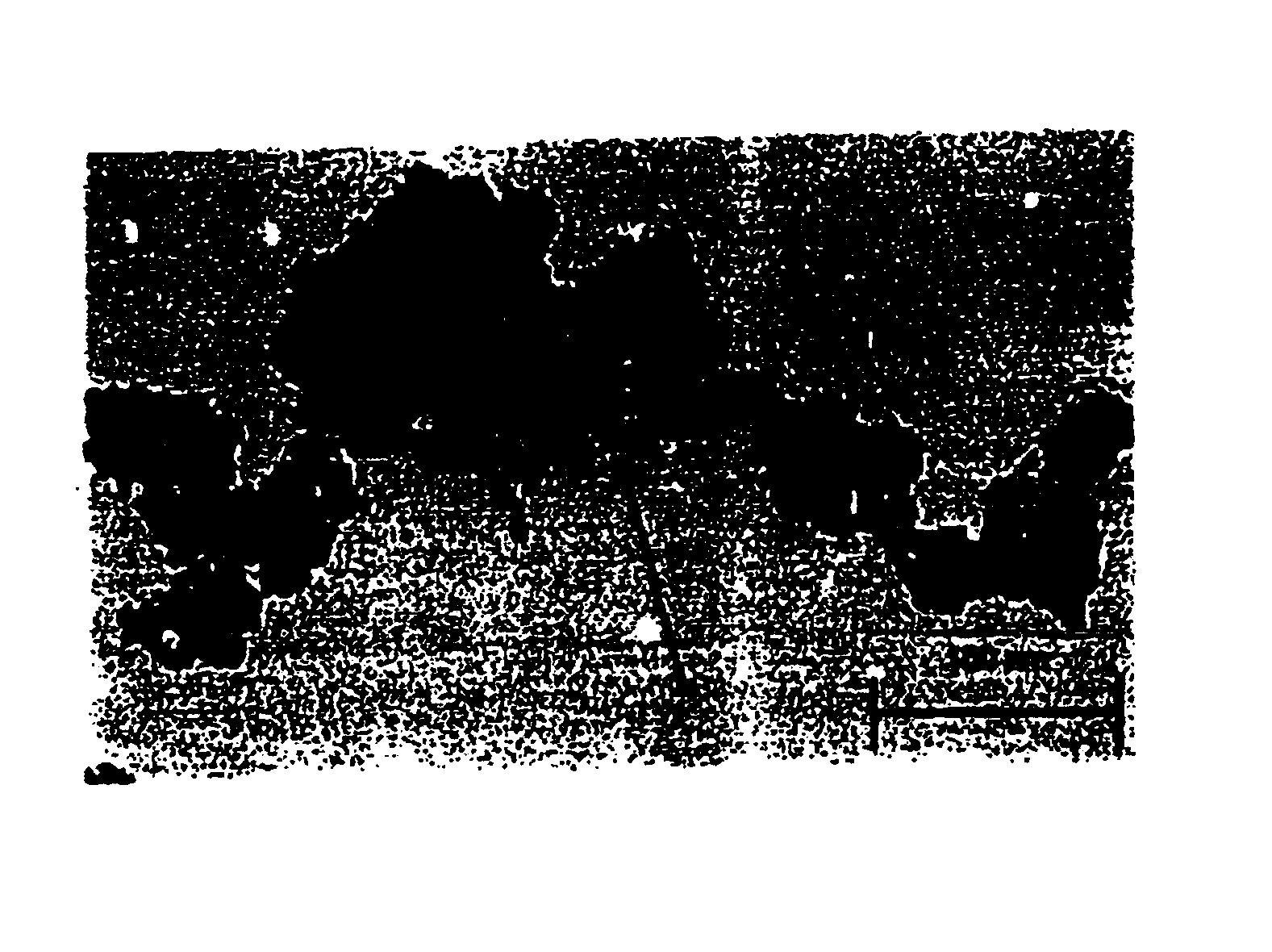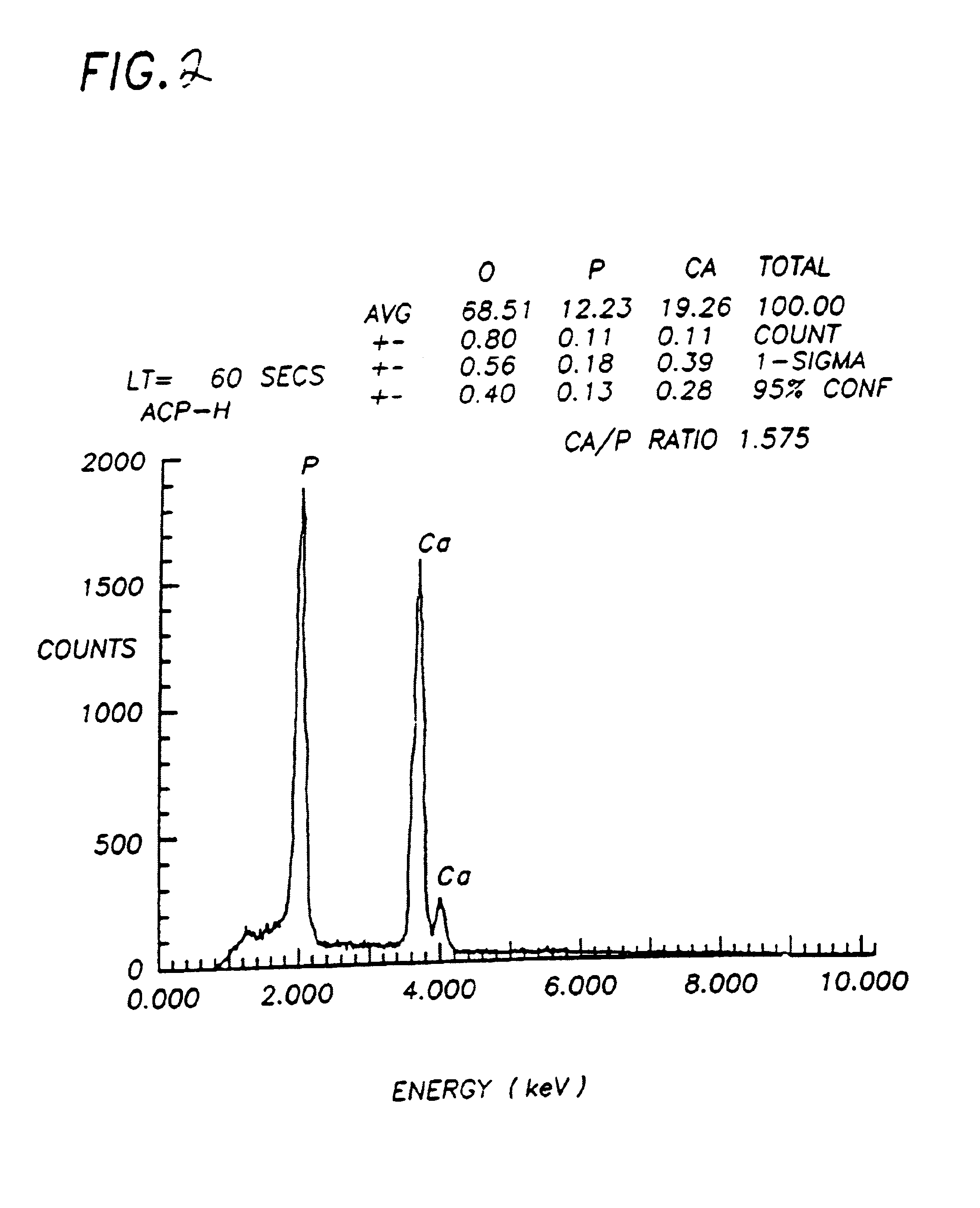Bioceramic compositions
a bioceramic and composition technology, applied in the field of bioceramic compositions, can solve the problems of difficult preservation of protein activity, difficult preservation of activity, and high temperature and/or pressure, and achieve excellent biocompatibility, resorbability, and processability characteristics
- Summary
- Abstract
- Description
- Claims
- Application Information
AI Technical Summary
Benefits of technology
Problems solved by technology
Method used
Image
Examples
example 1
Preparation of Reactive Amorphous Calcium Phosphate
[0227]This example describes the step-by-step preparation and methods to render relatively inert amorphous calcium phosphate solids into a highly reactive amorphous calcium phosphate of the present invention.
[0228]Solution A was prepared at room temperature by the rapid dissolution of 55 g Na2HPO4.7H2O (sodium phosphate), 50 g NaOH (sodium hydroxide), 30 g NaHCO3, (sodium bicarbonate) and 2 g Na4P2O2.10H2O in 1.3 l of distilled water. Solution B was prepared at room temperature by rapid dissolution of 43 g Ca(NO3)2.4H2O (calcium nitrate tetrahydrate) and 1 g MgCl2.6H2O in 0.5 l of distilled water.
[0229]The inert carbonated amorphous calcium phosphate was then prepared at room temperature by the rapid addition of solution B to rapidly stirring solution A. The precipitate of gel-like amorphous calcium phosphate thus formed was immediately filtered using filter paper (0.05 sq. m) with medium filter speed and a vacuum pressure of about ...
example 2
Preparation of Reactive Amorphous Calcium Phosphate
[0233]The preparation was conducted as described in Example 1 above, with the exception that the preparation of Solutions A and B was replaced by the following reactions. Solution A was prepared at room temperature by the rapid dissolution of 90.68 g of Ca(NO3)2.4H2O in 1.2 liter of carbonated distilled H2O. Solution B was prepared by dissolving 40.57 g of K2HPO4 in 1.53 liters of distilled H2O, containing 24 ml of 45 vol. % KOH solution. Chemical and physical properties of the product amorphous calcium phosphate resulting from this procedure were similar to those of the material prepared accordingly for Example 1.
example 3
Preparation of Reactive Amorphous Calcium Phosphate
[0234]The preparation was conducted as described in Example 1 above, with the exception that the preparation of Solutions A and B were replaced by the following reactions. Solution A was prepared at room temperature by the rapid dissolution of 10.58 g of Ca(NO3)2.6H2O in 0.15 liters of carbonated distilled H2O at pH greater than 9.0, as adjusted by NaOH. Solution B was prepared by dissolving 7.8 g of (NH4)2HPO4 in 0.35 liters of distilled H2O. Chemical and physical properties of the product amorphous calcium phosphate resulting from this procedure were similar to those of the material prepared according to Examples 1 and 2.
PUM
| Property | Measurement | Unit |
|---|---|---|
| porosity | aaaaa | aaaaa |
| grain sizes | aaaaa | aaaaa |
| temperature | aaaaa | aaaaa |
Abstract
Description
Claims
Application Information
 Login to View More
Login to View More - R&D
- Intellectual Property
- Life Sciences
- Materials
- Tech Scout
- Unparalleled Data Quality
- Higher Quality Content
- 60% Fewer Hallucinations
Browse by: Latest US Patents, China's latest patents, Technical Efficacy Thesaurus, Application Domain, Technology Topic, Popular Technical Reports.
© 2025 PatSnap. All rights reserved.Legal|Privacy policy|Modern Slavery Act Transparency Statement|Sitemap|About US| Contact US: help@patsnap.com



